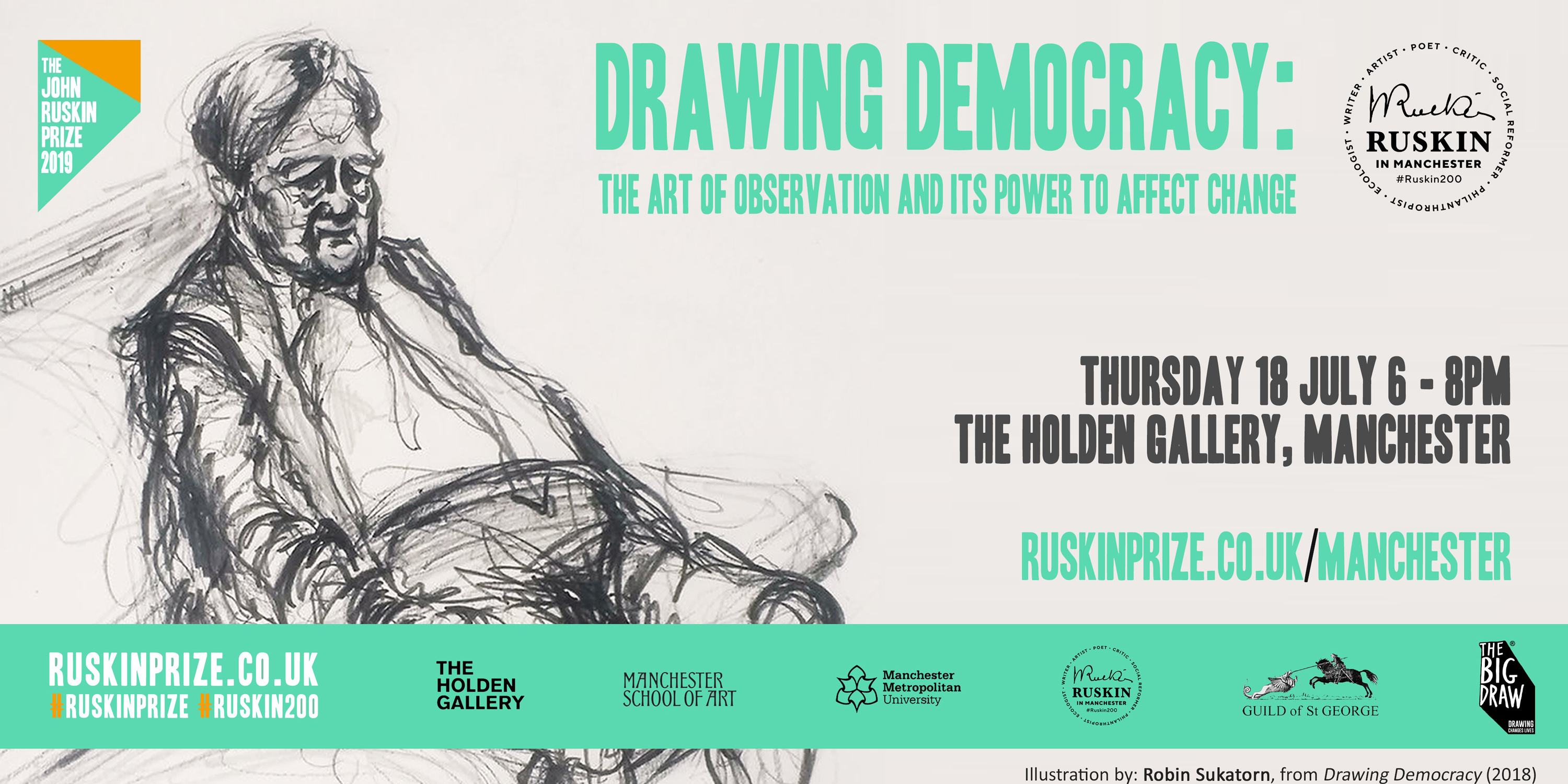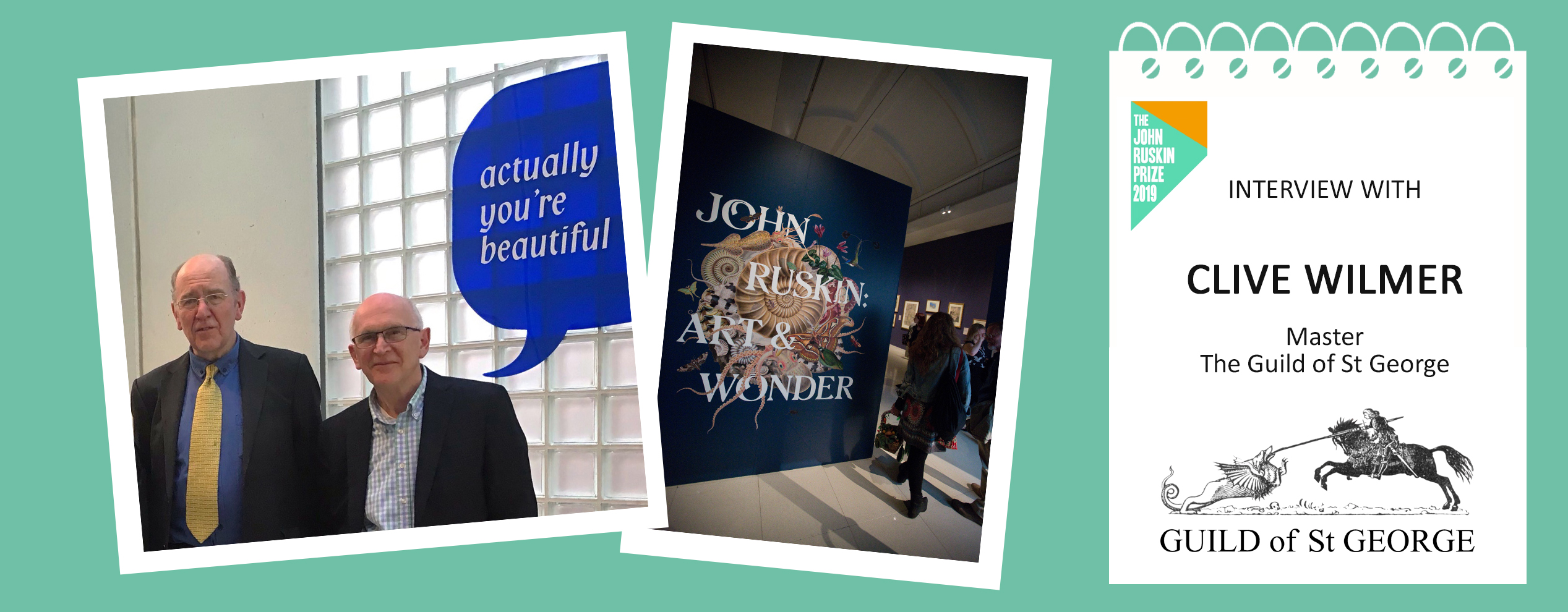
As The Big Draw joins with organisations around the world to celebrate the bicentenary of John Ruskin’s birth (1819) and on the brink of launching The 5th John Ruskin Prize exhibition: Agent of Change in Manchester, we’re thrilled to steal some time with Clive Wilmer, the current ‘Master’ of Ruskin’s own charity (est. 1871) - The Guild of St George, about the continued relevance of Ruskin the radical…
BD: Hello Clive! Thanks so much for talking the time to talk to us today. For those of our readers who may not be familiar with the work that you do, could you start by telling us a little bit about the Guild of St George’s history, and the links between the Guild, John Ruskin and The Big Draw?
CW: Hello! Well, the Guild was founded by Ruskin in 1871. He had come to think that industrial capitalism was entirely destructive: that it led to the oppression of the poor and the pollution of nature. He wanted a society rooted in a healthy rural economy and what he called ‘handwork’ as opposed to mechanisation. He also wanted to encourage art and craftsmanship, not just for aesthetic reasons, but because he thought art helped us to see nature and appreciate its beauty. In particular, he valued drawing as a discipline that helps us to see things – and truly to see something is also to understand it, to see into it – see what it does, what it is for, what it means…. It was mainly to revive this aspect of Ruskin’s teaching that the Guild in 2000 founded The Big Draw (formerly know as The Campaign for Drawing).
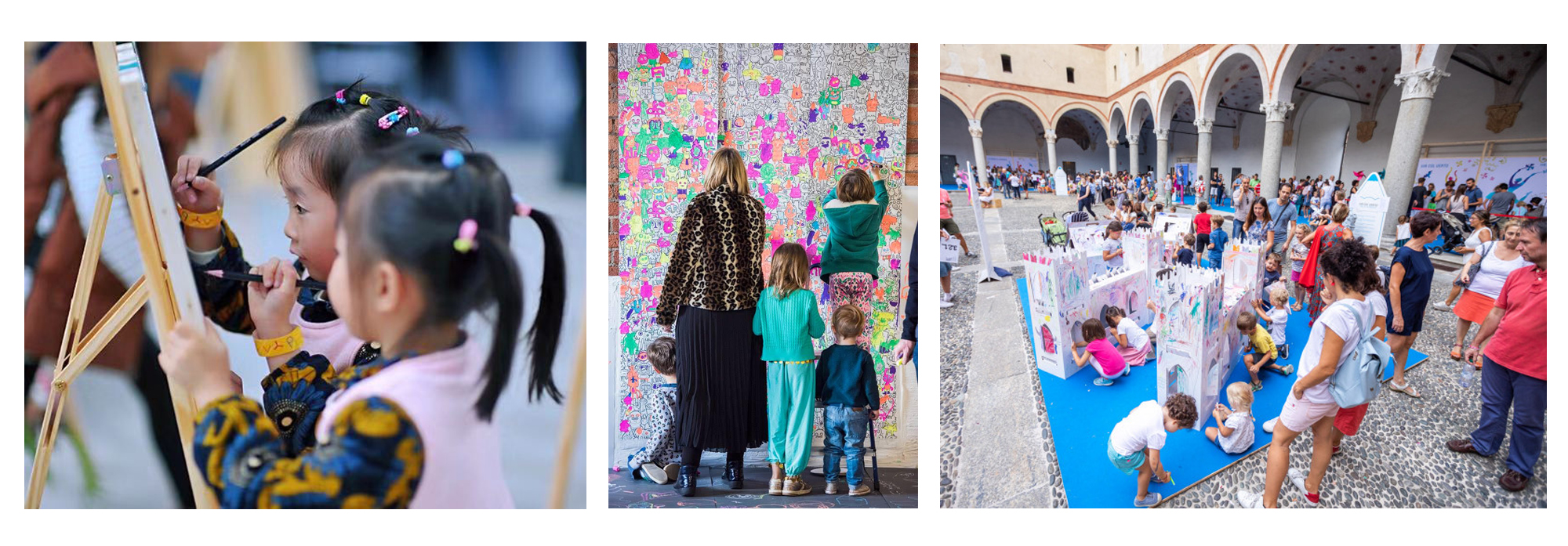
Big Draw Festival events taking place across the globe in 2018 (Pictured: Singapore, UK and Italy). The Festival has reached over 4 million people across the globe since launching in 2000.
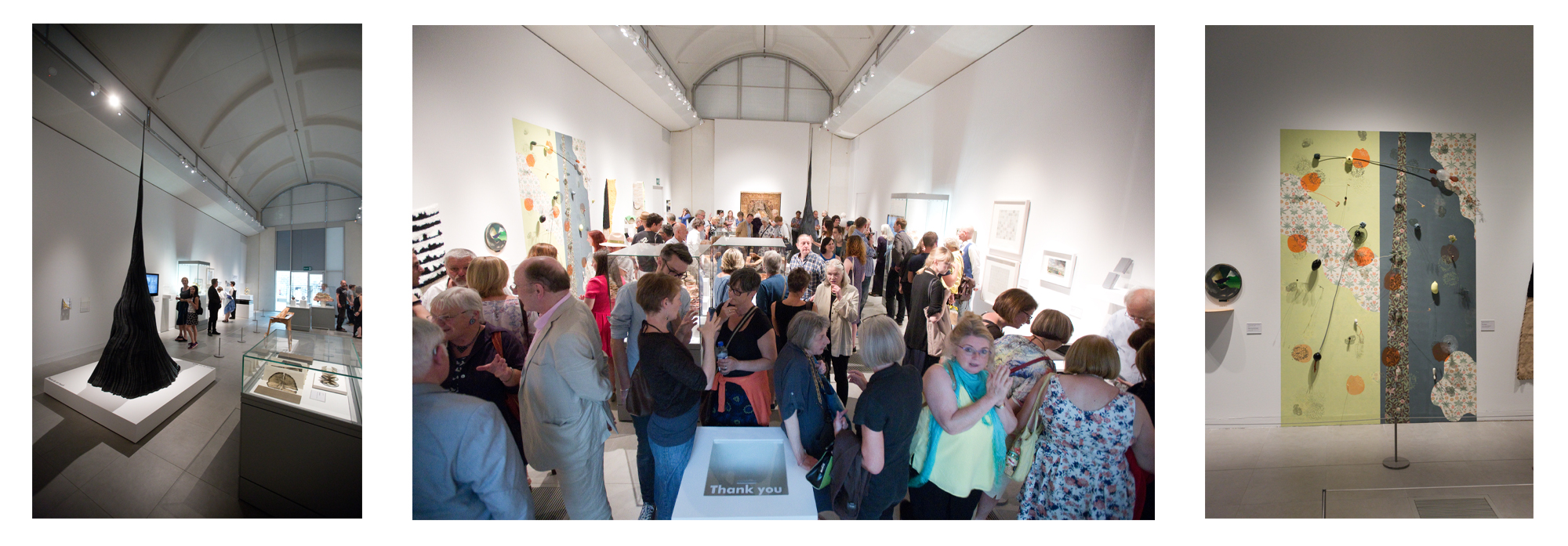
Images above: The John Ruskin Prize 2017: Master of All Trades, The Millennium Gallery Sheffield, Photos: Any Brown. (The John Ruskin Prize was founded by The Guild of St George in 2012 and is Organised by The Big Draw).
BD: As Master of the Guild of St George, you have characterised yourself as a ‘Ruskin enthusiast’. What was it that initially drew you to Ruskin, and inspired you to become a Companion of the Guild?
CW: Many things! I loved Ruskin’s writing, his prose style partly – which is like a kind of poetry – but also the range of things he talked about. I mean, he was interested in many of the things I was interested in and made me interested in others as well – economics most remarkably. But more importantly than that, I liked the way his writings bring together many things normally thought of as unrelated. He’ll be talking about (let’s say) savings in the economic sense and out of the blue he’ll refer to the church of the Salute in Venice, because salute, salvation and saving are all etymologically connected.
That might suggest a very intellectual person, which he undoubtedly was, but the best thing of all about him was that he wanted his thought to lead to action, he wanted to DO things, and he often addressed what he wrote to people with very little education of a formal kind. That’s what led me to the Guild. I am a poet and an academic and not at all a practical person, but the Guild enables me to help change the world in a practical way. The Guild tries to apply Ruskin’s ideas and principles to modern life. It is not an antiquarian organisation, by the way; it has respect for the context in which it finds itself.
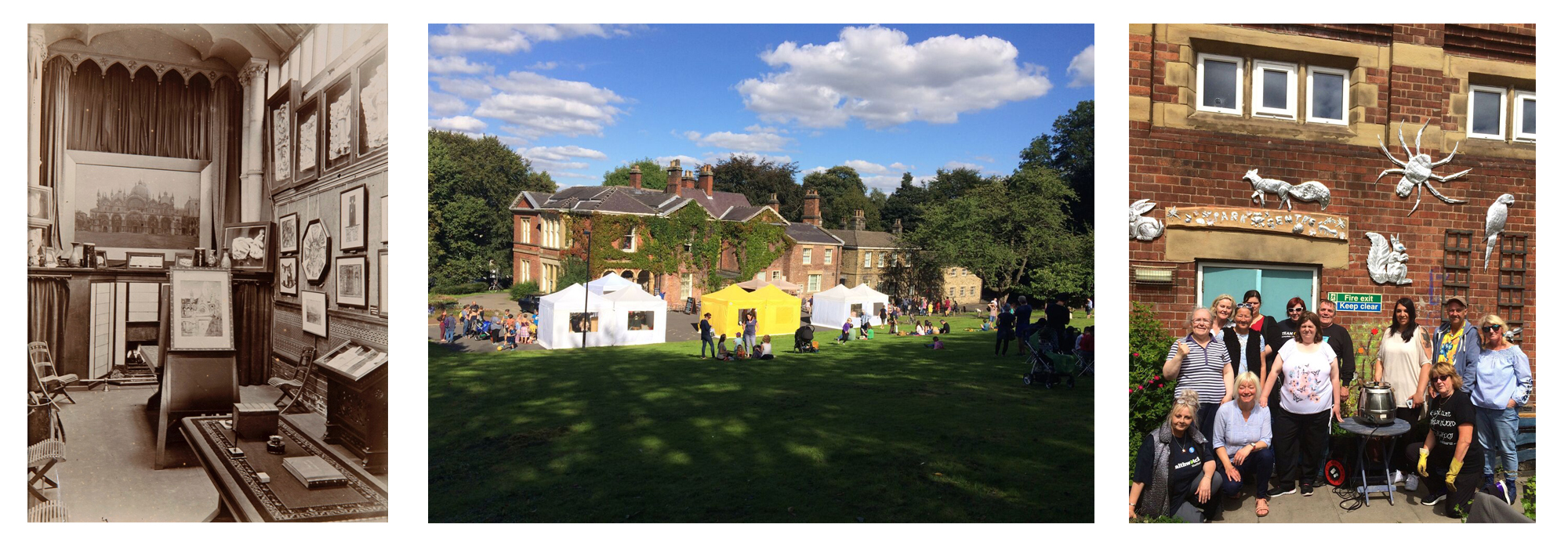
Images (l-r): Interior view of the St George’s Museum Walkley, Sheffield, c1885, the first home of the Ruskin Collection, Ruskin in Sheffield public programmes / Big Draw events 2018 and Members of the Park Centre Community Garden local residents group, Sheffield, with the aluminium animals they made in partnership with Guild Companion, sculptor Jason Turpin Thomson, inspired by the Ruskin Collection. Part of the Guild’s 2018 Ruskin in Sheffield programme.
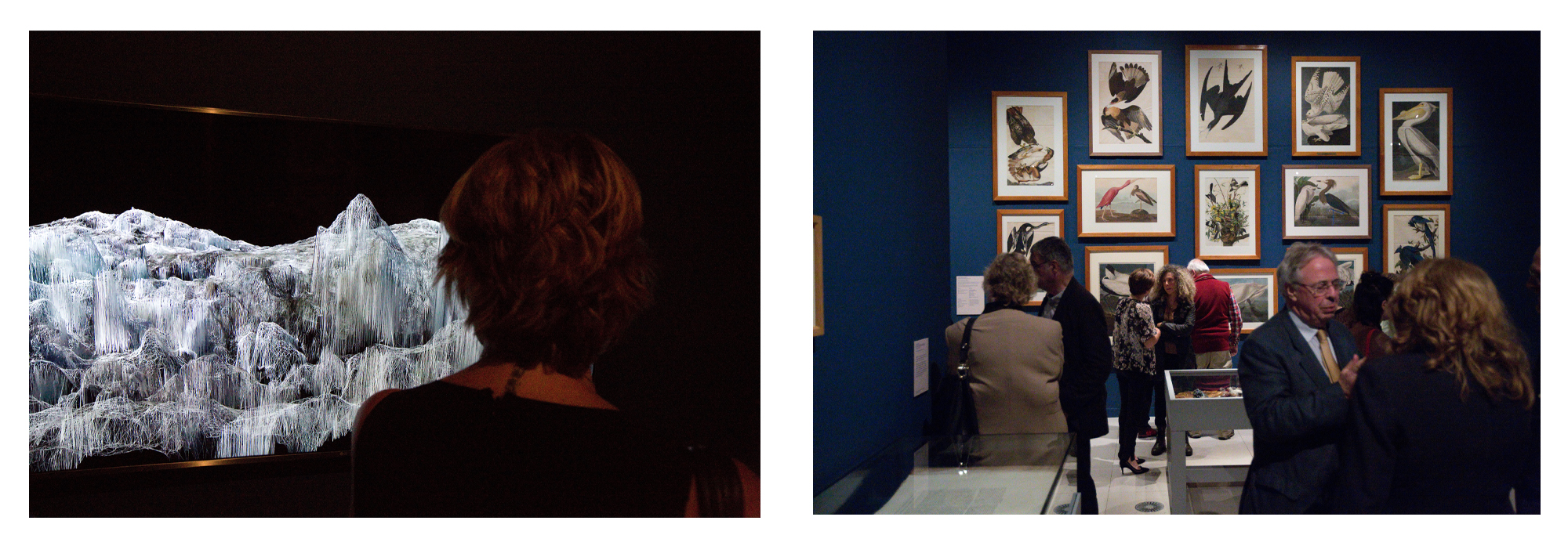
Images above: Installation views of 'John Ruskin: Art & Wonder' (2019) presented by The Guild of St George and Museums Sheffield (keepers of The Ruskin Collection). Photos: Andy Brown.
BD: In 2000, the Guild of St George founded the Campaign for Drawing, which has since grown into our independent charity The Big Draw. Our work in promoting the importance of Visual Literacy is something that resonates with a lot of Ruskin’s own views; in fact, the term sounds much like something he might have coined himself! What do you think Ruskin would have thought of this idea of ‘Visual Literacy’?
CW: I agree: it does sound like Ruskin! Nowadays we often talk about reading pictures or reading buildings. I think Ruskin was probably the first person to use the word ‘read’ in that way. He tells his readers that they never speak about reading a building as they would talk about reading Dante or Milton. But we do read when we look closely. It’s all connected with what he has to say about seeing, of course. When we look closely at (let’s say) the Ducal Palace in Venice we start reading it, and reading is an exceptionally close and attentive kind of seeing. He also says that art is a language; not all languages are verbal, of course – no one disputes the fact that mathematics is a language – and Ruskin is wonderfully skilled at reading the languages of art and architecture and telling us what they say.
Ruskin also says that we have to learn how to see. We spend our lives looking at things or letting them pass before our eyes, but most of us rarely see. To see something, as our language suggests, is also to understand it – to see what it is, what is does, what it means. You can only read something if you see it.
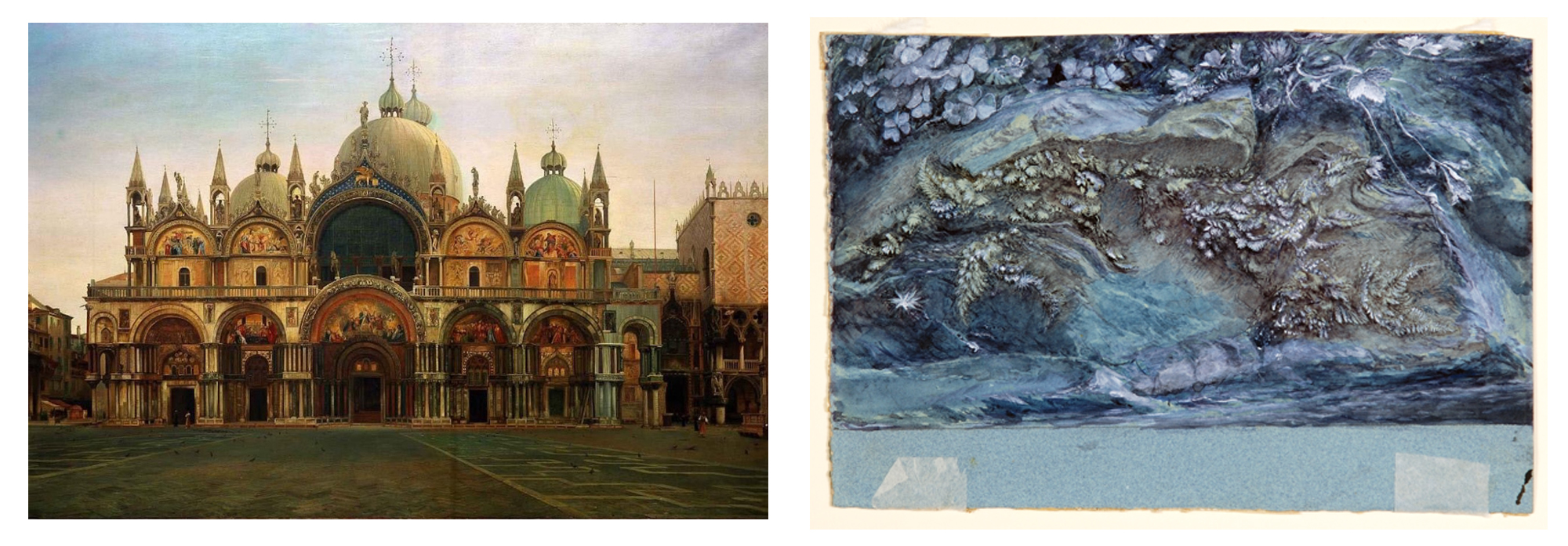
Images (l-r): Western Façade of St Mark's Basilica, Venice (1876-82) by John Wharlton Bunney. Commissioned by John Ruskin for the Collection of the Guild of St George, Museums Sheffield, Study of Moss, Fern and Wood-Sorrel, upon a rocky river bank, 1875-79, by John Ruskin. Collection of the Guild of St George, Museums Sheffield
The Big Draw: In terms of his international reach, Ruskin did much to shape the myth and perception, as well as the conservation of the city of Venice. He formed a strong bond with Venice over the course of a lifetime, dedicating himself to the studying, drawing and painting of the city’s historic buildings, which he felt were being neglected and abused. What are some of the ways in which Ruskin’s work has left a lasting impact on the city of Venice?
CW: Most obviously in the survival of Venice as both an ancient city and a living one. Ruskin understood that the whole life of the city depended on its relationship with the sea and that attempts to modernise the city would destroy it. He was depressed by the coming of the railway to Venice and by steam ships and gas lamps and so on. He would have liked it to remain as it had been when he first went there. But the infrastructure of Venice, though no longer dominated by the gondola, is essentially a marine infrastructure. The most obvious thing Ruskin did for Venice, though, was to champion the beauty of her medieval art, Gothic and Byzantine, most of which would have been destroyed if he had not made it an international issue.
It is hard to believe that in the mid-nineteenth century, St Mark’s was thought ugly and there was a programme to modernise its mosaics. Ruskin led the campaign to save the western façade of the Basilica from rebuilding. Above all, his profound readings of that building and the Ducal Palace – and others contemporary with them – saved those buildings and gave them the valuations they still have today.
The Big Draw: Ruskin was just 20 years old when the daguerreotype camera was invented, and he embraced this new medium with fervent enthusiasm. He appreciated photography primarily as a tool for the preservation of architecture; of course, technology has developed in leaps and bounds since Ruskin’s time, with ‘selfie sticks’ and camera phones now arguably pulling us further from the real world, only to experience it through our phone screens. What do you think Ruskin would have thought of the modern approach to photography?
CW: He would undoubtedly have hated the cheapening and easy proliferation of images that we live with today, and the mindlessness with which images are made – ‘snaps’ is the word. But his attitude was more complex than that suggests. As you say, he welcomed the daguerreotype and, in collaboration with two of his valets, George Hobbs and Frederick Crawley, was a considerable photographer. Ruskin’s daguerreotype of the Mer de Glace, by the way, is probably the first photo ever taken of a landscape – and it’s a very fine photo. But Ruskin also hated mechanisation and, when paper photographs came in, he turned against them. What he objected to was the idea that it was art.
It seems to me that he hated anything which objectified the world – that removed the engagement of human powers of ‘admiration’ (to use a favourite word of his) with the physical world. Drawing, by contrast, engages our whole humanity in the process of representation. The truth is, though, that Ruskin continued occasionally to use photographs for recording things and very good many of them are. Not many people realise moreover, that he admired the work of the great Whitby photographer Frank Meadow Sutcliffe and invited him to his house on Lake Coniston in the 1870s. It was on that visit that Sutcliffe took his photo of Ruskin, for me the profoundest portrait there is of him. Sutcliffe was a seriously good artist.
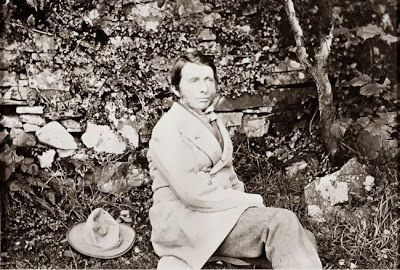
Image: Frank Meadow Sutcliffe (photographer), John Ruskin Seated on a Bank near Brantwood, Coniston, Photograph, 1873, Collection of the Guild of St George, Museums Sheffield
The Big Draw: Throughout his lifetime, Ruskin dominated cultural thought throughout Britain. Ruskin’s influence ranged far and wide; his ideas inspired the Arts and Crafts Movement and the founding of the National Trust, the Society for the protection of ancient buildings, and the Labour Movement. The majority of his teachings, research and work fighting for social change continue to have an immediacy to this day, hence this year’s Ruskin Prize theme ‘Agent of Change’. Can you tell us a little more about the relevance of this theme to Ruskin’s teachings and his efforts for social change?
CW: All thoughts about Ruskin and change should be prefaced with the first sentence in his autobiography: ‘I am, and my Father was before me, a violent Tory of the old school.’ The starting-point for Ruskin was that change was a bad thing. Stability and continuity are the things to be desired. What we sometimes think of as Ruskin’s radicalism was very often, in his eyes, a reaction against change. So it is not that the poor were well treated before the nineteenth century, but that the ways in which they were ill-treated in his experience were mostly new.
But of course, what he cared about was injustice and he wanted to stop that whether it meant changing the world or not. He was also, from the start of his career, a champion of modern art. He only began writing art criticism because he wanted to defend the radically modern paintings that Turner was producing around 1840 – paintings like the ‘Snow Storm’ in the Clore Gallery at Tate Britain.
He didn’t actually like the very abstract late paintings by Turner, but he did not object at all to the use of abstract methods to communicate otherwise inexpressible facts of nature. Ruskin’s dislike of modernity, I suspect, was sometimes a pose. I can’t prove that. But he was a brave man and laid himself open to attack and, whatever he may have said about stability and permanence, he understood perfectly well that the world has to change. He was also keen to resist the attempts of the capitalists to represent their economic advantage as inevitable change that would in the long term be to the benefit of all: what we sometimes call the ‘trickle-down effect’. Ruskin nailed that one in Fors Clavigera in the 1870s.

With thanks to Clive Wilmer, current Master of The Guild of St George. The Big Draw team would like to express their sincere gratitude to Clive and all involved with the many impactful projects of The Guild of St George which are all committed to championing Ruskin’s work today – a legacy we are proud to be part of.
The 5th John Ruskin Prize: Agent of Change opens 12 July - 24 August at The Holden Gallery Manchester. More information here.
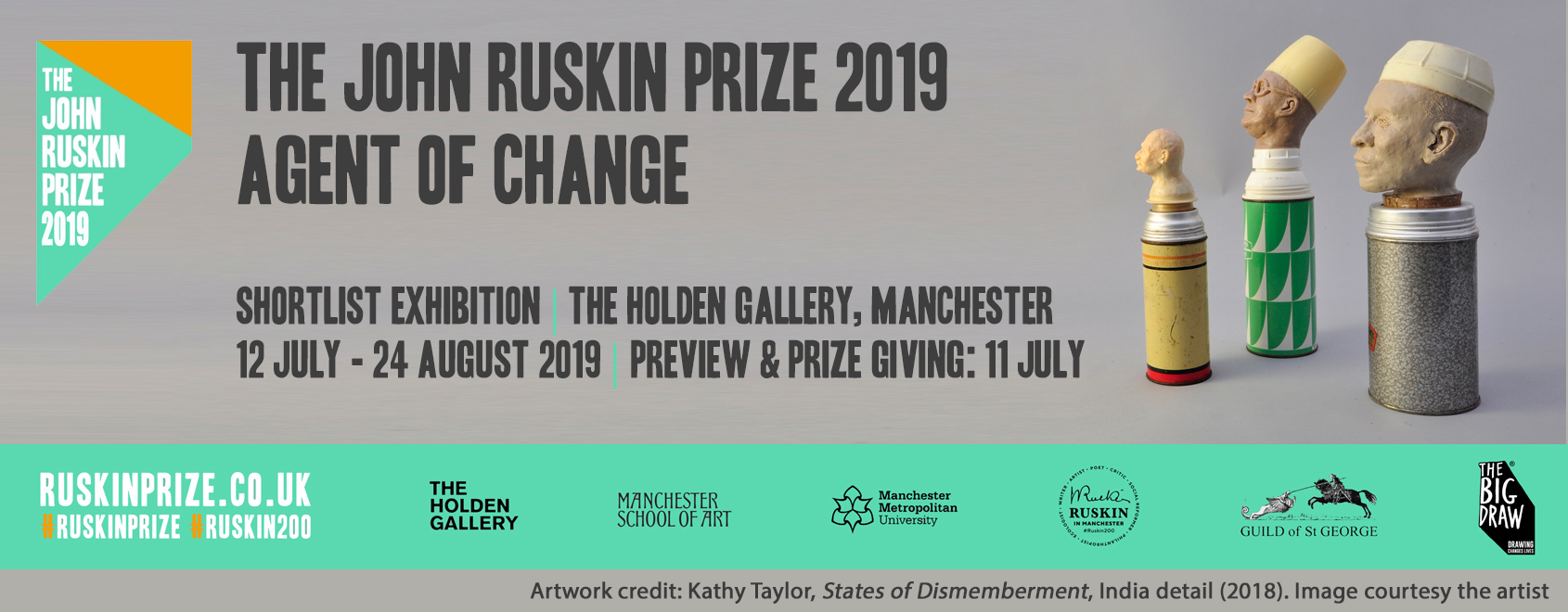

Get involved in 2019: #Ruskin200 #RuskinMcr #RuskinPrize #DrawnToLife:
The Big Draw & Ruskin in Manchester: Twilight 'Walk and Gawk' Sketchcrawl in Manchester | Starting at MMU Special Collections | 10 July. Find out more & book
The John Ruskin Prize 2019: Agent of Change | The Holden Gallery, Manchester | 12 July – 24 August Find out more
Ruskin in Manchester: Drawing Democracy | The Holden Gallery, Manchester | 18 July. Find out more & book
Ruskin in Manchester | Summer 2019 | Venues across Manchester Find an event
Ruskin200 | Venues worldwide celebrating The Bicentenary of John Ruskin’s birth (1819 | 2019). Find out more
The Big Draw Festival 2019: Drawn to Life. Get Involved
Take a look at our #Ruskin200 collection in The Big Draw Shop, including an exclusive new limited edition print by Big Draw patron Sir Quentin Blake featuring artwork from the newly re-published 'The King of The Golden River' by John Ruskin.
